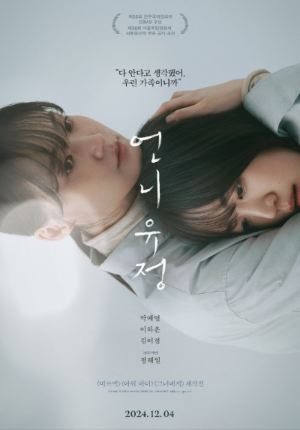
Introduction
The film Sister Yujeong 2024 has captured the hearts of audiences worldwide, earning accolades for its compelling storyline, masterful acting, and technical brilliance. Among the many elements contributing to its success, the sound design stands out as a key factor. As a sound director, understanding the role of audio in crafting the film’s emotional resonance and audience engagement offers a unique perspective on its triumph. This blog will explore the success of Sister Yujeong 2024 by analyzing its sound design under three key aspects: emotional depth, immersive world-building, and innovative soundscapes.
1. Emotional Depth: Evoking Audience Connection Through Sound
One of the standout features of Sister Yujeong 2024 is its ability to evoke profound emotions, largely supported by its sound design. The score, composed of hauntingly beautiful melodies, underscores the emotional weight of pivotal scenes. For instance, during moments of grief, the subtle use of minor chords and strings amplifies the protagonist's inner turmoil, drawing viewers deeper into her world. Additionally, the sound effects—such as the soft rustling of leaves or the distant echo of footsteps—add an almost tangible quality to the characters’ experiences. This attention to detail not only enhances the realism of the scenes but also ensures that the audience remains emotionally invested throughout the film. Sound bridges between scenes also serve as a seamless transition, allowing viewers to remain immersed without feeling disoriented.
2. Immersive World-Building: Creating a Believable Setting
The sound design in Sister Yujeong 2024 plays a crucial role in building its world, particularly through ambient noise and environmental soundscapes. Set in a dystopian future, the film features a mix of natural and artificial sound elements that reflect the stark contrast between human resilience and technological dominance. For example, the bustling cityscapes are brought to life with layers of industrial sounds, robotic chatter, and distant alarms, juxtaposed with the serene, untouched rural areas depicted with chirping birds and flowing water. These sonic contrasts emphasize the thematic tension between nature and technology, a recurring motif in the film. Such intricate soundscapes make the setting believable and immersive, enhancing the narrative experience for the audience.
3. Innovative Soundscapes: Pushing the Boundaries of Audio Design
What sets Sister Yujeong 2024 apart is its innovative approach to sound. The film employs cutting edge techniques like binaural recording and dynamic mixing to create a more interactive and engaging audio experience. For example, during a critical chase sequence, the use of directional sound allows viewers to feel as if they are in the middle of the action, with the sound of footsteps and heavy breathing shifting between speakers. Moreover, the film breaks traditional sound design conventions by integrating sound motifs that symbolize key themes or character arcs. A recurring metallic hum, for instance, signifies the looming threat of artificial intelligence, subtly reminding the audience of the stakes even in quieter moments. These creative choices not only heighten tension but also add layers of meaning to the storytelling.
Conclusion
The success of Sister Yujeong 2024 is a testament to the power of sound design in modern filmmaking. By leveraging emotional depth, immersive world-building, and innovative soundscapes, the film delivers an audio-visual experience that resonates with audiences on multiple levels. For sound directors, it serves as a masterclass in how thoughtful and creative sound design can elevate a film from good to extraordinary. Aspiring filmmakers and sound designers alike can draw inspiration from Sister Yujeong 2024 to push the boundaries of their craft and create memorable cinematic experiences.